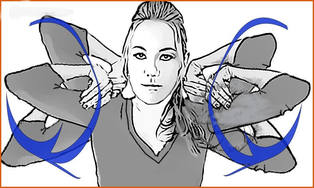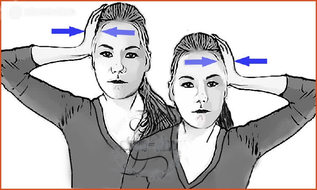There was a time when the disease was considered "age-related", but recently "osteochondrosis" is more often diagnosed before the age of 35. This is due to changes in the pace of life - more and more people are engaged in sedentary and sedentary work. And most importantly, physical activity, elasticity is reduced, and therefore blood circulation is disrupted, which is the main thing in the nourishment and regeneration of spinal discs.
An interesting fact: according to statistics, more than 80% of the population, after 30 years, more or less changes in the spine.
Reasons
Osteochondrosis is a common name for spinal aging. The process is directly related to changes in the structure of the vertebrae and discs. Under the influence of internal and external factors, the discs become thinner. Appearance - protrusions, tears, instability of the vertebrae, changes in bone tissue, the appearance of osteophytes (thorns, growths). And all these events are complications of osteochondrosis. The course is chronic and complicates normal life without complex therapy.
You may be familiar with the factors that cause dystrophic changes, but again:
- Hypodynamics - helps to disrupt blood circulation in the neck, weaken the muscular corset.
- Spinal curvature (bending, lordosis, kyphosis, scoliosis).
- Staying in a static position for a long time and vice versa - increasing loads and lifting weights.
- Injuries.
- Overweight, pregnancy.
- Heredity, metabolic diseases.
Man is the only creature on the planet who suffers from a spinal problem. This is due to our ability to walk completely upright, as well as our muscle weakness and great neck mobility.
Hereditary predisposition plays an important role in the development of cervical osteochondrosis. In addition, it is not necessary for relatives to have osteochondrosis. The risk zone includes people with degenerative and dystrophic diseases of the osteoarticular system (arthrosis, spondylitis, hernia, etc. ) in the family.
The neck is an important connection. Many veins and nerves pass through the brain. Problems in this part of the body will undoubtedly affect the blood circulation in the brain and the work of the upper part - the shoulders, arms. Degeneration develops gradually, with growth.
Stages of development of cervical osteochondrosis
In the first stage, there is a local pain syndrome, which is accompanied by a sharp tension in the muscles, which increases the already unpleasant sensations and restricts movement.
Pain is expressed in 2 forms:
- Cervicago - "neck lumbago", a sharp sharp pain that occurs when moving.
- Cervical - with aching, painful, persistent muscle tension. Even with proper treatment, it can take more than two weeks.
In the second stage, a "radical" syndrome is added - constriction of nerves due to thinning of ligaments and discs. The pain is seen when sneezing or coughing. If the patient is placed on his back and moves his head passively, painful sensations will occur.
The alignment of the hand from the neck to the fingertips is especially characteristic after sleep. The symptom disappears quickly after active movements or when the hand is placed on the back of the head. If numbness or pain persists, complications (protrusion, hernia) may occur.
In addition, with the onset of "shoulder-hand" syndrome, there may be a feeling of "freezing" of the shoulder - when osteochondrosis begins arthritis of the shoulders and hands due to circulatory disorders.
Main symptoms
The main symptoms of cervical spine osteochondrosis include:
- Headache and dizziness.
- Localized pain, as well as possible radiation to the shoulder, occiput or scapula (especially the connection to the cervicothoracic region).
- Mismatch and weakness in the arms.
- The mixture in my throat.
- Arterial hypertension (persistently high blood pressure).
- Decreased hearing and vision, tinnitus (development of vertebral artery syndrome).
Interesting: changes in the disease affect important blood vessels in the neck that supply blood to the brain. Patients with chondrosis may have Sistine Chapel syndrome - fainting as a result of a hard head throw.
Pain and its localization are often disguised as a serious disease - angina pectoris.
Diagnosis and treatment
It is very important to treat the symptoms of osteochondrosis of the cervical spine at the beginning of degenerative processes. To do this, you should immediately seek the help of a neurologist or vertebrologist. But experience shows that they are already looking for help with complications - protrusion, hernia, instability of the vertebral bodies.
The patient should be thoroughly examined - ultrasound of the heart, cerebral and cervical vessels, ECG, urine and blood tests should be collected. It is important to take an x-ray and make a few projections and stack with an open mouth (to see the vertebrae surrounding the teeth).
Unfortunately, doctors diagnosed with osteochondrosis treat many diseases because they do not have the time, experience or desire to determine the cause of this or that symptom. A treatment that provides temporary relief is prescribed, but the real cause remains undetected, and over time, everything returns or does not bring any relief. It is a condition that heals people on their own.
Treatment of cervical spine osteochondrosis
Therapy should be as complete as possible.
- Physiotherapy.
- Drug treatment.
- Massage.
- Physiotherapy.
- Stretch.
- Elongation of the cervical spine according to the method of Shishon.
- Get out of the habit.
Physiotherapy
The effectiveness of treatment of osteochondrosis of the spine with the help of physiotherapy and therapeutic baths has been scientifically proven.
- Eliminate pain syndrome.
- Eliminate inflammation.
- Increase the effectiveness of drug treatment and other treatments for cervical osteochondrosis.
The therapeutic effect of physiotherapy in the form of low-frequency pulsed electromagnetic therapy with radon baths, sometimes in combination with iodine-bromine baths, increases.
Drug treatment
Inflammation of the compressed nerve roots occurs during complications of osteochondrosis in the cervical spine, hernia or large protrusions. Therefore, in order to eliminate the symptoms of inflammation and stop the pain, it is necessary to pierce the course of intramuscular injection of vitamins B - B6, B12. In addition, the viscosity of the blood increases with the disruption of blood circulation, which disrupts the blood supply of oxygen to the brain. It is necessary to take antiplatelets.
Drug treatment.
- Eliminates pain and inflammation.
- Accelerates metabolism in damaged tissues due to disruption of blood supply.
- Thins blood by improving blood circulation.
Massage
A neck massage course is definitely included in the treatment program for cervical osteochondrosis.
- Muscle tension is relieved, thereby releasing tightly compressed arteries.
- Improves blood circulation and tissue nutrition, which has a positive effect on the heart and brain.
- Muscle pain is reduced.
Unfortunately, a good massage is not free, and many people refuse this procedure due to high prices. However, in the medical complex, cervical spine massage should be included for good work. Although they advise that physiotherapy exercises are not as necessary.
Physiotherapy exercises
Treatment of osteochondrosis with physical therapy of the cervical spine is the main method, without which it is impossible to cure. No pill can cure osteochondrosis without exercise therapy. Remember that you will need to exercise every day for a year to forget the symptoms of the disease forever.
Important: Sports therapy is a 70% victory over osteochondrosis. Although the pain disappeared, the disease did not go away. You can't be comfortable.
Goals and objectives of exercise therapy.
- Strengthen the deep muscles of the neck and the muscular corset of the shoulder area so that the muscles hold the head in the correct position without stress on the intervertebral discs and do not form protrusions that compress the nerve endings. Increase the intervertebral space, thereby eliminating nerve root compression.
- Bring back painless movements while developing agility and mobility.
- Exercise accelerates and increases blood circulation, thereby improving the nutrition of the intervertebral discs and surrounding muscles.
Important: Train yourself to do a series of exercises 3 times a day for the first 4 weeks, then once a day for a year.
Neck Sports
You need to warm up your muscles before any exercise.
Warming
We warm the chest and neck muscles. Slow circular movements with the shoulders - back and forth. Every muscle should work as much as possible.

Circular movements with the shoulders - lift as high as possible, back, down and then forward. When pulling back - bring the shoulder blades together. And the same circles on each shoulder in turn.
Add a hand - and repeat the movements with arms bent at the elbows. We will bring the shoulder blades together again when we get our hands back. And then we will move our shoulders as far as possible.
This ends with warming. Let's start with some basic neck exercises.
Sports equipment
All movements should be done slowly to avoid self-harm and constricted nerves.
Accept the correct posture. The shoulders are down, slightly retracted, and the chin is parallel to the ground. Static exercises are aimed at training the deep muscles of the neck. Each movement resists for 5-8 seconds. Relax for two seconds and repeat. So 5 times.
- We press the palm on the temple and try to bend the head, we resist with our head, thus preventing the hand to bend the head to the side. Do the same on the other side.
- Put your hands on the lock, support your chin and press on the resisting head.
- We resist with our foreheads.
- From behind the head
- Alternatively, the skull resists

In addition to strengthening the neck muscles, you should also strengthen the shoulder girdle. Several exercises with the expander should be included in the treatment complex 2-3 times a week.
Additional load
Exercises such as running, brisk walking, swimming, aerobics will improve the overall blood circulation in the body. The brain suffers from a particularly poor blood supply, which requires oxygen in cervical spine problems. Exercises last at least 20-30 minutes twice a week.
Cervical spine dryness
The dry stretching method is horizontal and vertical. This method is called traction - a very effective treatment for osteochondrosis of the spine. Young people can easily recover using only one traction during treatment. Because the recovery of discs in youth is much faster. Of course, age impedes the ability to regenerate and repair cartilage tissue, but traction still remains an important point in the complex treatment of cervical osteochondrosis.
Stretch Problems
- Increase the lumen between the vertebrae.
- Relieve pain due to compression of nerve roots.
There are contraindications to this procedure, so do not do it without consulting your doctor. Previously, this method was used only in hospitals, sanatoriums and rehabilitation centers.

There is already a stretching technique at home using a treatment collar. The traction session lasts 15 minutes a day.
We have analyzed the whole treatment program for the cervical spine, it remains to talk about a normal lifestyle, which should change perfectly.
Important: All of the above methods should be discussed with your doctor.
Don't give up habits
We understand that laziness and excuses cause early osteochondrosis. If you can't beat them, you don't need this article. For painkillers and continue to live as before. You can try to correct some bad habits.
- Lie on an orthopedic pillow and mattress.
- Don't lie on a high pillow for hours while reading or playing on the phone with your head held high. At this point, the cervical vertebra disrupts blood circulation by pressing on the blood vessels.
- A stable state on a computer when there is no control over time. Set an alarm every hour to warm up your stiff neck muscles.
- Exercise more - exercise, exercise outdoors, walk 10, 000 steps a day.
Summary
Course procedures - injections, massage and physiotherapy are performed every six months for 1 month. During this period, physiotherapy exercises increase up to 3 times a day.
Every day in other months:
- Sports therapy - once a day.
- Stretch.
Repeat the procedure after 5 months. And this ratio is at least a year. Positive results are noticeable within a month.
The above technique is not an algorithm for all cases of cervical osteochondrosis. All points should be discussed with your doctor. However, if the doctor prescribes only one method, for example, physiotherapy, massage, the effect will be temporary. The treatment is long, so it is better to focus on the success of immediate recovery. Believe me, you will start training and feel comfortable and will not return to your old lifestyle.
How cervical osteochondrosis is treated
Several groups of drugs are prescribed for basic drug treatment.
- Painkillers are prescribed in tablets or in novocaine blockade, especially for severe pain.
- Non-steroidal anti-inflammatory drugs - Nurofen, Diclofenac.
- Irritant ointments - finalgon, capsicam.
- Preparations to relax the neck muscles - muscle relaxants.
- Intramuscular injection course for group B
Support is provided during the elimination of the main pain syndrome using currents, massage, warming (boxes, mustard plasters). Pain always occurs during the period of exacerbation, to eliminate them and increase muscle tension, the above-mentioned exercise therapy complex is applied, budget pepper plaster is applied.
Important: During vertebral artery syndrome, any exercise with dizziness is prohibited when the cervical arteries are constricted due to osteochondrosis.
It is effective to take a soothing bath at home with herbal solutions, compresses and rubs (for example, to use propolis, aloe). Russian bath copes well with muscle tension. A traditional steam room with a broom relaxes, reduces pain and improves mood.
In extreme cases, if there is a risk that complications due to compression may lead to disability, surgery should be considered. Namely - complete constriction of blood vessels or nerves, significant growth of osteophytes or the formation of hernia protrusions. The operation is performed according to all the rules of neurosurgery - under a microscope and with minimal incisions.





































